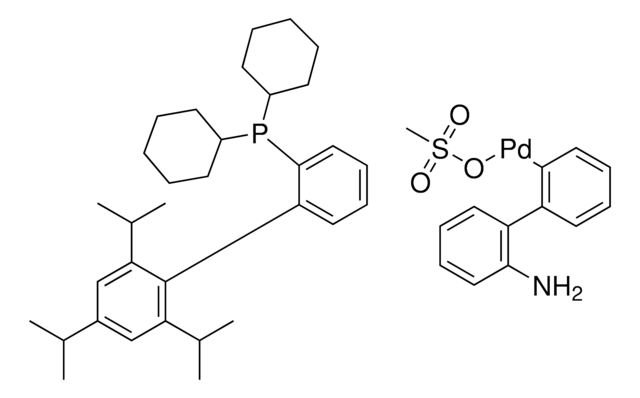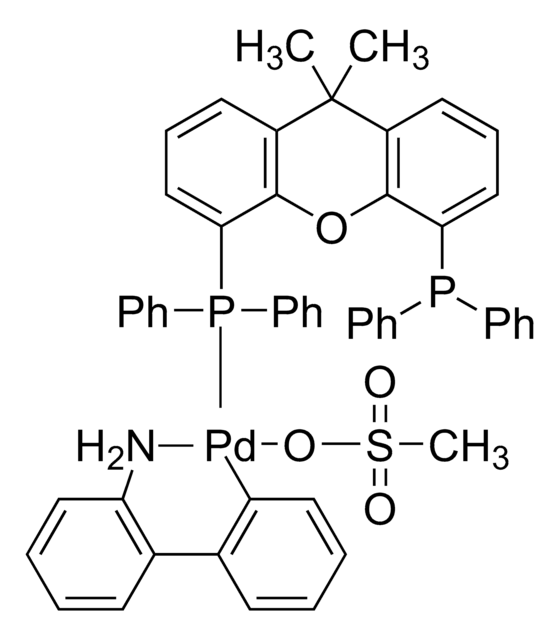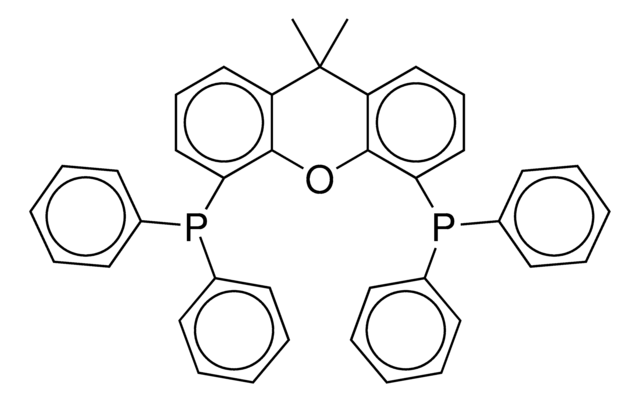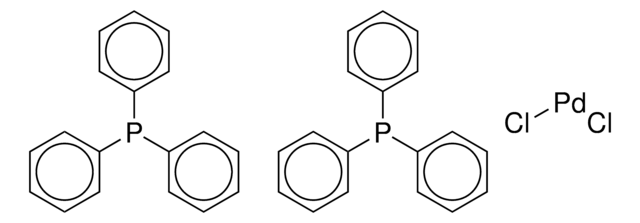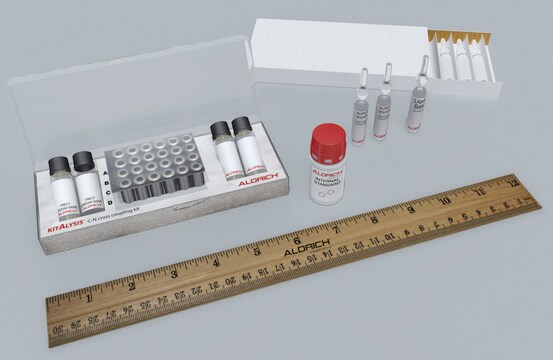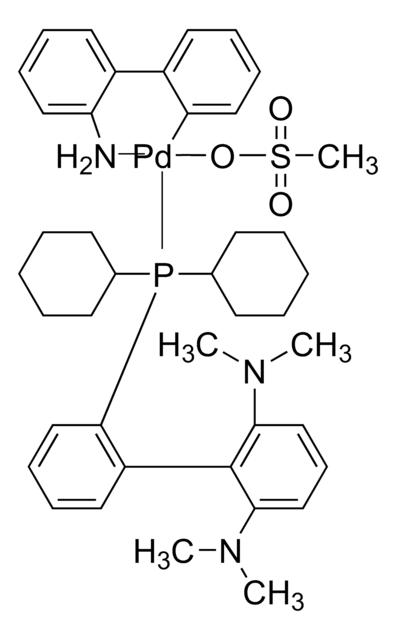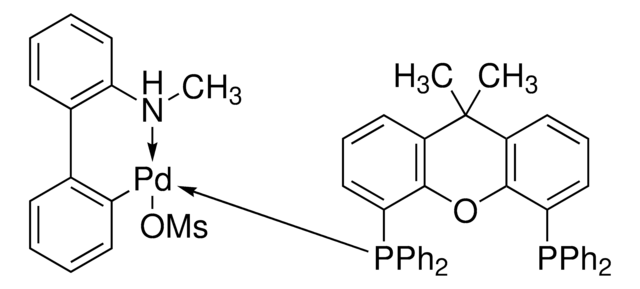932213
XantPhos Pd G3 ChemBeads
Sinonimo/i:
[(4,5-Bis(diphenylphosphino)-9,9-dimethylxanthene)-2-(2′-amino-1,1′-biphenyl)]palladium(II) methanesulfonate
Autenticatiper visualizzare i prezzi riservati alla tua organizzazione & contrattuali
About This Item
Formula empirica (notazione di Hill):
C52H45NO4P2PdS
Numero CAS:
Peso molecolare:
948.35
Codice UNSPSC:
12352101
NACRES:
NA.22
Prodotti consigliati
Forma fisica
solid
Livello qualitativo
Impiego in reazioni chimiche
reagent type: catalyst
reaction type: Cross Couplings
Descrizione generale
XantPhos Pd G3 is a third generation (G3) Buchwald precatalyst. It is air, moisture and thermally-stable and is highly soluble in a wide range of common organic solvents. It has long life in solutions. XantPhos Pd G3 is an excellent reagent for palladium catalyzed cross-coupling reactions. Some of its unique features include lower catalyst loadings, shorter reaction time, efficient formation of the active catalytic species and accurate control of ligand: palladium ratio.
Applicazioni
XantPhos Pd G3 may be used in the following processes:
Negishi cross-coupling reaction during the synthesis of palmerolides.
Aminocarbonylation of heteroaryl bromides with carbon monoxide (CO) in the presence of triethylamine.
Coupling between polyglycosyl thiols and aglycon halides by C-S bond formation.
ChemBeads are chemical coated glass beads. ChemBeads offer improved flowability and chemical uniformity perfect for automated solid dispensing and high-throughput experimentation. The method of creating ChemBeads uses no other chemicals or surfactants allowing the user to accurately dispense sub-milligram amounts of chemical.
Learn more about ChemBeads products
Product is also available as neat precatalyst (763039)
Negishi cross-coupling reaction during the synthesis of palmerolides.
Aminocarbonylation of heteroaryl bromides with carbon monoxide (CO) in the presence of triethylamine.
Coupling between polyglycosyl thiols and aglycon halides by C-S bond formation.
ChemBeads are chemical coated glass beads. ChemBeads offer improved flowability and chemical uniformity perfect for automated solid dispensing and high-throughput experimentation. The method of creating ChemBeads uses no other chemicals or surfactants allowing the user to accurately dispense sub-milligram amounts of chemical.
Learn more about ChemBeads products
Product is also available as neat precatalyst (763039)
Altre note
High-Throughput Reaction Screening with Nanomoles of Solid Reagents Coated on Glass Beads
Versatile Methods to Dispense Sub-Milligram Quantities of Solids using Chemical Coated Beads for High-Throughput Experimentation
ChemBead Enabled High-Throughput Cross-Electrophile Coupling Reveals a New Complementary Ligand
Versatile Methods to Dispense Sub-Milligram Quantities of Solids using Chemical Coated Beads for High-Throughput Experimentation
ChemBead Enabled High-Throughput Cross-Electrophile Coupling Reveals a New Complementary Ligand
Prodotti correlati
N° Catalogo
Descrizione
Determinazione del prezzo
Codice della classe di stoccaggio
11 - Combustible Solids
Classe di pericolosità dell'acqua (WGK)
WGK 3
Punto d’infiammabilità (°F)
Not applicable
Punto d’infiammabilità (°C)
Not applicable
Scegli una delle versioni più recenti:
Certificati d'analisi (COA)
Lot/Batch Number
Ci dispiace, ma al momento non ci sono COA disponibili online per questo prodotto.
Se ti serve aiuto, non esitare a contattarci Servizio Clienti
Possiedi già questo prodotto?
I documenti relativi ai prodotti acquistati recentemente sono disponibili nell’Archivio dei documenti.
Ana L Aguirre et al.
Chemistry (Weinheim an der Bergstrasse, Germany), 27(51), 12981-12986 (2021-07-08)
High-throughput experimentation (HTE) methods are central to modern medicinal chemistry. While many HTE approaches to C-N and Csp2 -Csp2 bonds are available, options for Csp2 -Csp3 bonds are limited. We report here how the adaptation of nickel-catalyzed cross-electrophile coupling of
Il team dei nostri ricercatori vanta grande esperienza in tutte le aree della ricerca quali Life Science, scienza dei materiali, sintesi chimica, cromatografia, discipline analitiche, ecc..
Contatta l'Assistenza Tecnica.